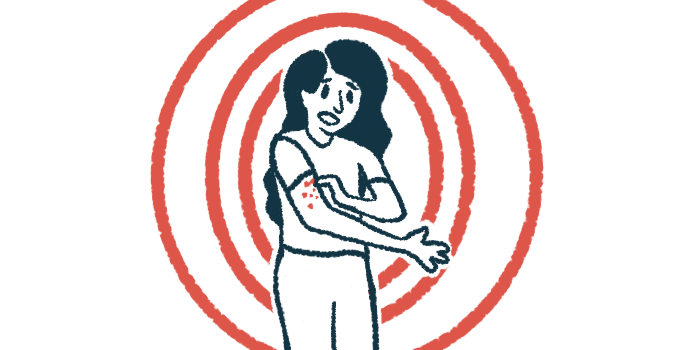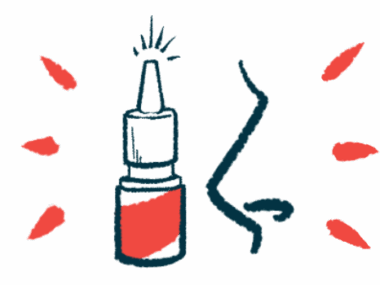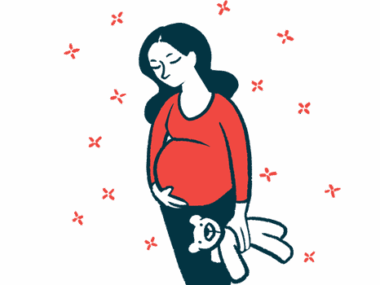Skin cream deemed cause of woman’s Cushing’s syndrome
Case highlights risk of long-term topical corticosteroid use, researchers say
Written by |

Long-term use of topical corticosteroids for a genetic skin condition caused Cushing’s syndrome and adrenal insufficiency — low hormone production from the adrenal glands — in a 50-year-old woman, according to a case report.
“This case highlights the risk of systemic complications from chronic topical corticosteroid use,” the researchers wrote. “Clinicians should be aware of potential adrenal suppression and consider [hormonal] evaluation in patients receiving prolonged, high-dose topical corticosteroid therapy.”
The study, “A case of Hailey–Hailey disease accompanied by Cushing’s syndrome and adrenal insufficiency due to long-term usage of topical steroids with review of literature,” was published in the Endocrine Journal.
Cushing’s syndrome is a collection of symptoms caused by prolonged exposure to high levels of the stress hormone cortisol. Common signs include weight gain, fat buildup around the face and the back of the neck, as well as fatigue, high blood pressure, and cardiovascular problems.
There can be several causes of elevated cortisol, including a tumor in the pituitary gland, called Cushing’s disease, and tumors in the adrenal gland that secrete excess cortisol. Prolonged exposure to high doses of corticosteroids, a group of medications that mimic cortisol and are used to reduce inflammation, is a leading cause of iatrogenic, or medication-induced, Cushing’s syndrome.
A decade of steroid use leads to Cushing’s symptoms
A research team in Japan detailed the case of a 50-year-old woman who developed iatrogenic Cushing’s — meaning it was caused as a result of medical treatment — after the long-term use of topical corticosteroids for Hailey-Hailey disease (HHD).
HHD is a rare, genetic skin condition characterized by red, raw, and blistered areas of skin, particularly in folds where there is moisture and friction, such as the armpits and groin. Standard treatment typically includes topical corticosteroids to ease redness and swelling and antibiotics for infections.
The woman was diagnosed with HHD 10 years earlier and started on 50 grams (g)/day of clobetasol, a topical corticosteroid. Two years before, her rash worsened and she was prescribed a different corticosteroid, betamethasone, at a dose of 30 g/day.
As her skin symptoms lessened, the betamethasone dose was reduced to 15 g/day. However, she developed general fatigue, and blood tests revealed that her levels of cortisol and adrenocorticotropic hormone, which stimulates adrenal cortisol production, were undetectable.
A physical examination showed signs of Cushing’s syndrome. These included weight gain, elevated blood pressure, swelling in the lower legs, and fat buildup around the face and between the shoulder blades, as well as red stretch marks on her abdomen. Extensive skin erosions were also noted in the armpits, thighs, and genital area.
Several tests indicated that she had adrenal insufficiency, a condition where the adrenal glands don’t produce enough of certain hormones, primarily cortisol and aldosterone. This can happen when long-term steroid use suppresses the glands’ natural hormone production, leaving them slow to recover when the medication is reduced.
She then started on oral hydrocortisone, a corticosteroid, at a dose of 15 mg/day to manage symptoms of glucocorticoid withdrawal, but not as a replacement for adrenal failure. This rapidly improved her skin symptoms, general fatigue, and lower leg swelling.
After discharge, the woman reported a worsening skin rash and muscle weakness. The oral hydrocortisone dose was increased to treat her fatigue and muscle weakness, not her skin symptoms. However, as the skin rash showed little improvement, she was readmitted and given a higher dose of betamethasone ointment (40-50 g/day).
She was discharged after a few days, but then developed insomnia and was treated with lemborexant, a sleep aid. Three months later, she was given oral apremilast for her skin blisters. At the same time, the hydrocortisone dose was reduced to 15 mg/day and the betamethasone ointment to 15 g/day, which eased her insomnia.
Soon after, blood tests revealed signs of prolonged high blood sugar, and she developed oral candidiasis, a fungal infection caused by the yeast Candida, for which miconazole was prescribed. About a week later, she sustained a compression fracture in her lower spine and was admitted to the orthopedic department. During her stay there, she again experienced muscle weakness and fever. Further tests were consistent with progressive osteoporosis, a disease that weakens the bones.
“Based on these findings, the patient was diagnosed with both iatrogenic Cushing’s syndrome and adrenal insufficiency due to long-term steroid use,” the researchers wrote. “This case underscores the potential for significant systemic effects from topical steroids, particularly when used in high-absorption areas over long periods.”






